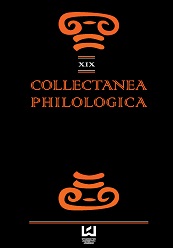When does a man beget a monster? (Aristotle "De generatione animalium")
When does a man beget a monster? (Aristotle "De generatione animalium")
Author(s): Joanna SowaSubject(s): Ancient Philosphy, Phenomenology, Ontology
Published by: Wydawnictwo Uniwersytetu Łódzkiego
Keywords: Aristotle; De generatione animalium; monsters
Summary/Abstract: In this paper I discuss the problem of the borderline between the lack of resemblance to any family member and monstrosity in Aristotle’s Generation of Animals. In book IV both phenomena have been explained as a result of ‘resolution’ or ‘loosening’ of the ‘movements’ in the sperm, whose function is to recreate in the offspring’s body the features of its parents or ancestors. Consequently, sometimes the offspring bears no resemblance to any ancestor, and sometimes ‘it no longer has the appearance of a human being at all’. According to T. V. Upton, both groups are ‘monsters’ of some kind; he names them ‘generic individuals’, assuming that after ‘loosening’ of the movements which carry particular traits, the task of completing the embryo’s development is taken by the movements of universals (genus or species) present in the sperm. In contrast to Upton’s opinion, I try to prove that the movements of particular – although ‘merged’ and changed – still remain active, leading to the final development of any given individual; in the case of a ‘monster’, however, a deformation of the offspring’s whole body or its parts results not only in the lack of resemblance to any representatives of its own species, but also in disability.
Journal: Collectanea Philologica
- Issue Year: XIX/2016
- Issue No: 1
- Page Range: 5-13
- Page Count: 9
- Language: English

